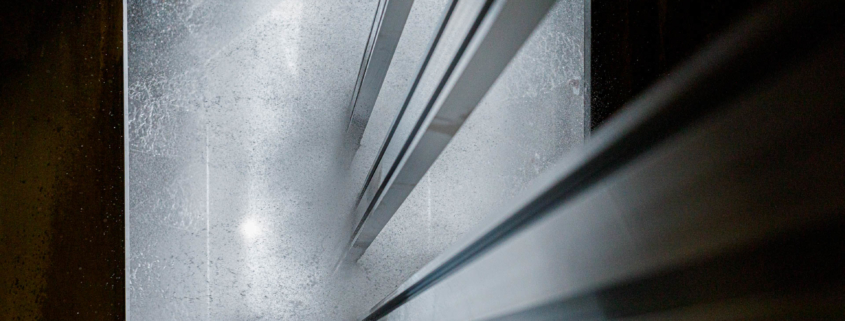Aluminium Essentials for Renewable Energy
Aluminium Essentials for Renewable Energy
On 30 September, the Ratcliffe-on-Sour power station closed. It was the last operational coal-fired power generator in the UK. This was a major step in our reliance on renewables and the decarbonisation of energy production. That’s great news, but what’s it got to do with aluminium? Let us tell you more.
Aluminium & Wind Power
We have plenty of blustery days in the UK, especially in coastal areas. Harnessing this natural power has been crucial to reducing our reliance on coal. You might be surprised to know that wind power is now the main generator of UK electricity. However, continued investment in renewables and the ban lifted on on-shore wind turbine installations are essential for achieving Net Zero targets in energy production.
Aluminium plays a part, as it is widely used in wind power technologies. Firstly, you need towers that can literally weather a storm. Fortunately, aluminium offers the necessary structural strength and durability. It is widely used in elements of the tower including, stairs, walkways and platforms as well as in the turbine blades. You can also find aluminium in the generator mounting systems and electrical components.
Did you know, the tallest wind tower in the UK stretches 251 meters up? It’s located at Lethans Extension Wind Farm in Ayrshire.
In addition to strength and stability, aluminium doesn’t rust. When anodized or powder coated, it is non-corrosive, even when exposed to salty seawater and air. This is a must for off-shore wind farms and its durability ensures that maintenance is kept to a minimum.
Aluminium & Solar Power
Weather resistance is also a priority for solar panels. Another major advantage is that aluminium is a lightweight material. That’s because many solar panels are located on top of buildings, where the mounting weight is a primary consideration. In addition to minimising the risk of damage to the roof, the lower weight of aluminium makes it easier to handle and install panels.
Aluminium isn’t used on the photovoltaic panels that capture sunlight and convert it to electricity. However, aluminium extrusions provide the ideal solution for solar panel frames and mounting fixtures. In most applications, multiple panels are connected in a block. The frame secures the panels in place and offers a level of protection. The mounting fixtures enable secure installation and allow the flat panels to be angled to the ideal position to maximise exposure to sunlight.
Did you know that an early example of using solar energy to power a house was part of the 1981 Homeworld exhibition in Milton Keynes? A community of experimental sustainable houses were designed and built with a focus on energy efficiency. They are all still inhabited today.
Although the concepts of Homeworld were radical 40 years ago, around 1.4 million UK homes now have solar panels. What’s more, the largest solar heating system in the UK has recently been completed. A total of 950 solar panels now sit on the roof of the British Library in London. The renewable energy system includes controls to regulate both temperature and humidity in the building. These are essential for preserving the collection.
Aluminium & Thermal Efficiency
The high conductivity of aluminium is another characteristic that is desirable in thermal efficient technology. It makes the metal a viable option for heat exchangers in geothermal and ground-source heat pumps. In addition, radiators are being manufactured from aluminium as it is quicker to heat up than cast iron or steel.
Let’s add electric vehicles into the mix! The lightness of aluminium and thermal efficiency have made it the material of choice for battery boxes, cooling systems and energy storage. Aluminium is also used for the charging infrastructure.
Cut to Fit, Infinitely Recyclable Aluminium
So, we’ve highlighted that aluminium is strong, yet lightweight. We’ve noted it is durable and stable, even when exposed to harsh weather conditions. And, we’ve mentioned thermal conductivity. However, there are two further reasons to consider aluminium extrusions.
Firstly, custom profiles can be designed to incorporate detailing that reduces the need for tooling. This reduces production time and costs. The aluminium extrusions can also be cut to fit the required dimensions for each product.
Secondly, aluminium is infinitely recyclable. The material used on each project comes from recycled sources and can be recycled at the end of use. For projects where green credentials, low carbon footprint and circular thinking are paramount, it ticks all the boxes.
Aluminium Extrusion Specialists
Salesmade Ltd are specialists in the design and fabrication of aluminium extrusions. From custom profiles to powder coating and full or partial assembly, we offer the entire process on-site. We have experience in manufacturing solar panel frames and are happy to discuss how we can support the development of your renewable energy products.
Get in touch on 01296 431292 or sales@salesmade.co.uk

